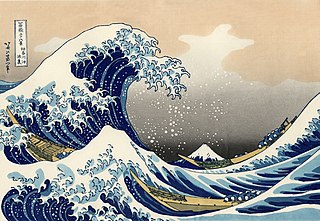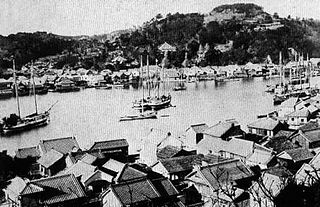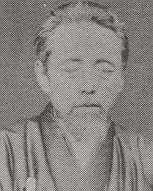| Hoshina Masaari | |
|---|---|
 | |
| 10th (Hoshina) Daimyō of Iino | |
| In office 1848–1871 | |
| Preceded by | Hoshina Masamoto |
| Succeeded by | none |
| Wakadoshiyori | |
| In office 1866–1867 | |
| Personal details | |
| Born | March 22, 1833 Edo, Japan |
| Died | January 23, 1888 (aged 54) |
| Nationality | Japanese |
| Spouse(s) | Date Setsuko |
Viscount Hoshina Masaari(保科 正益) (March 22, 1833 – January 23, 1888) was a Japanese daimyō of the late Edo period who was the last ruler of the Iino Domain (Kazusa Province; 20,000 koku ). Though lord of a minor domain, his family was a branch of the Matsudaira of Aizu, whose founder Hoshina Masayuki was the older brother of the Iino founder, Hoshina Masasada.

The daimyō were powerful Japanese feudal lords who, until their decline in the early Meiji period, ruled most of Japan from their vast, hereditary land holdings. In the term, dai (大) means "large", and myō stands for myōden(名田), meaning private land.

The Edo period or Tokugawa period (徳川時代) is the period between 1603 and 1868 in the history of Japan, when Japanese society was under the rule of the Tokugawa shogunate and the country's 300 regional daimyō. The period was characterized by economic growth, strict social order, isolationist foreign policies, a stable population, "no more wars", and popular enjoyment of arts and culture. The shogunate was officially established in Edo on March 24, 1603, by Tokugawa Ieyasu. The period came to an end with the Meiji Restoration on May 3, 1868, after the fall of Edo.

Iino Domain was a feudal domain under the Tokugawa shogunate of Edo period Japan, located in Kazusa Province. The domain was centered on Iino Jin’ya, a fortified residence in what is now the city of Futtsu, Chiba. It was ruled for the entirety of its history by a branch of the Hoshina clan of Aizu.
Masaari was born in Edo to the 9th Iino lord, Hoshina Masamoto. Masaari was the younger brother of Matsudaira Teru. As he was initially weak, his father did not notify the shogunate of his birth. However, as Masamoto's first and second sons died in quick succession, he notified the shogunate of Masaari's birth in 1836; this is why Masaari's birthdate is given in some sources as 1836. He was made heir in 1847, and succeeded to family headship after his father's death in 1848. He received his family's hereditary title of Danjō no chū in 1850. In 1853, Masaari led Iino troops and took part in the defense of Uraga upon the arrival of Commodore Matthew C. Perry and the U.S. Navy's East India Squadron.
Matsudaira Teru, or Teruhime, was an aristocrat in Japan during the late Edo and early Meiji periods. She participated in the siege of Aizuwakamatsu Castle and was the adoptive sister of Matsudaira Katamori, Military Commissioner of Kyoto and a prominent figure on the Tokugawa shogunate's side during the Meiji Restoration.

Uraga (浦賀) is a subdivision of the city of Yokosuka, Kanagawa Prefecture, Japan. It is located on the south eastern side of the Miura Peninsula, at the northern end of the Uraga Channel, at the entrance of Tokyo Bay.

Matthew Calbraith Perry was a Commodore of the United States Navy who commanded ships in several wars, including the War of 1812 and the Mexican–American War (1846–48). He played a leading role in the opening of Japan to the West with the Convention of Kanagawa in 1854.
As lord of Iino, he held a variety of minor posts in the Tokugawa administration, most notably becoming a wakadoshiyori in the 2nd year of Keiō. He was also the chief commander of the multi-han military force active in the Chōshū Expedition, leading forces on the Iwami front.
The Wakadoshiyori (若年寄), or "Junior Elders", were high government officials in the Edo period Japan under the Tokugawa shogunate (1603-1867). The position was established around 1633, but appointments were irregular until 1662. The four to six wakadoshiyori were subordinates to the rōjū in status, but they ranked above the jisha-bugyō. The served for a month at a time on a rotating basis and were selected from the ranks of the fudai daimyō. There were periods when the number of wakadoshiyori rose to 6 or 7 at one time.

Keiō was a Japanese era name after Genji and before Meiji. The period spanned the years from May 1865 to October 1868. The reigning emperors were Kōmei-tennō (孝明天皇) and Meiji-tennō (明治天皇).

The Second Chōshū expedition, also called the Summer War, was a punitive expedition led by the Tokugawa shogunate against the Chōshū Domain. It followed the First Chōshū expedition of 1864.
After the Boshin War he was ordered by the new government to investigate those who were "responsible" for the war, and it was as part of this action that former Aizu karo Kayano Gonbei was executed in Masaari's residence at Azabu, in 1869.

The Boshin War, also known as the Japanese Revolution, was a civil war fought in Japan between the ruling Tokugawa Shogunate and supporters of the Imperial Court from 27 January 1868 to 27 June 1869.
Karō were top-ranking samurai officials and advisors in service to the daimyōs of feudal Japan.

Kayano Gonbei was a Japanese samurai of the late Edo period, who served the Matsudaira clan of Aizu. He was a karō in the Aizu domain's administration. Kayano served in a senior military role during the Boshin War, he was later imprisoned by the Meiji government and made to commit suicide in Tokyo.
As with many other former daimyo, Masaari became a member of the kazoku as a viscount (shishaku) in the Meiji era. He had several children; the eldest son Hoshina Masaaki was his successor; one daughter, Shizuko, married Iwasaki Hisaya, the younger brother of Mitsubishi founder Iwasaki Yatarō.

The Kazoku was the hereditary peerage of the Empire of Japan, which existed between 1869 and 1947.

Iwasaki Yatarō was a Japanese financier and shipping industrialist, and the founder of Mitsubishi.









![Matsudaira Nobunori [松平喜徳] daimyo of the late edo period; 10th lord of Aizu](https://upload.wikimedia.org/wikipedia/commons/thumb/1/1a/Matsudaira_Nobunori.jpg/237px-Matsudaira_Nobunori.jpg)




![Matsudaira Sadaaki [松平定敬] daimyo of the late of Edo period; lord of Kuwana](https://upload.wikimedia.org/wikipedia/commons/thumb/6/67/Matudaira_Sadaaki.jpg/262px-Matudaira_Sadaaki.jpg)
